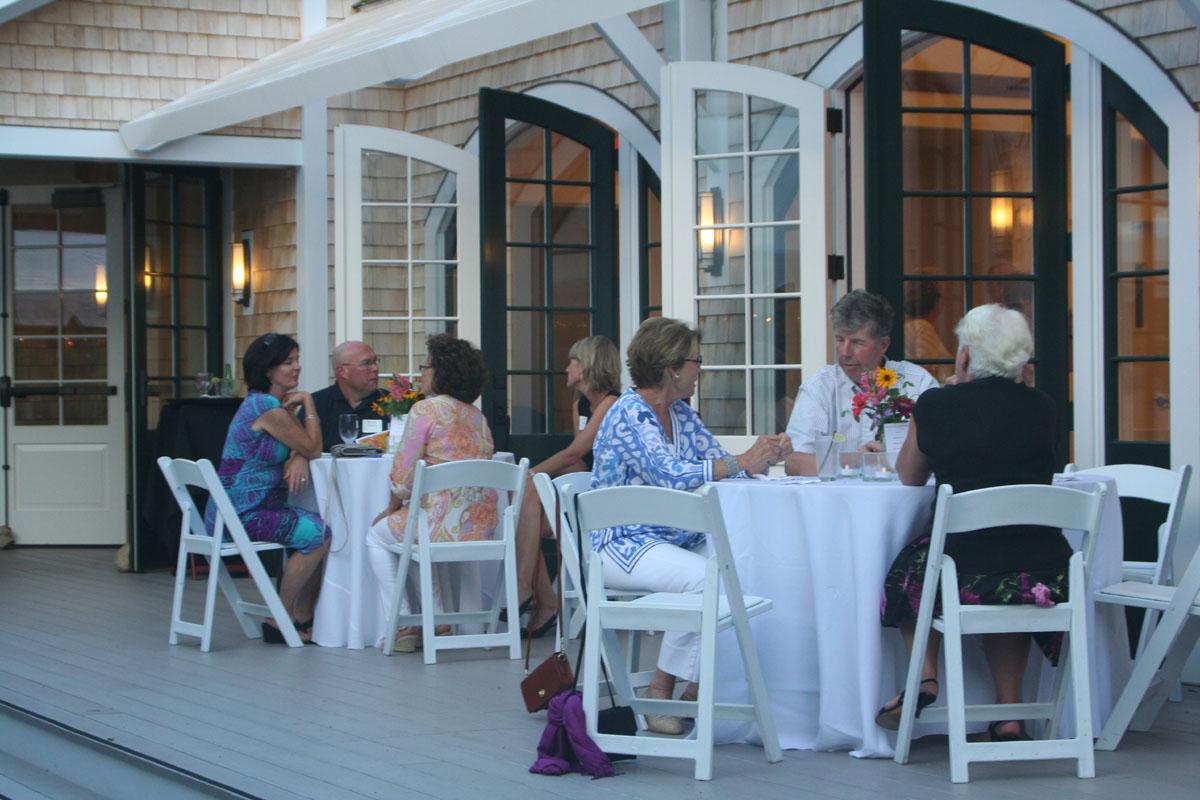 WELCOME!
WELCOME!
There’s so much to explore at the Museums on the Green, run by the Falmouth Historical Society.
Our beautiful two-acre campus features two 18th century homes, an early 20th century reconstructed barn, a vibrant Cultural Center, Colonial gardens, 2 historic cannons, stocks, and a four-seater outhouse. Look closely and you can even see the life-size outline of a ship on the lawn near the whaling pots. Each building and exhibit tell a story about those who have lived in and visited this seaside community. Take your time as you travel back in time. Let’s make history together!
 THE HALLETT BARN VISITOR CENTER
THE HALLETT BARN VISITOR CENTER
Rotating Exhibits & Whaling Wives Gift Shop
Departure for Seasonal Historic Walking Tours
The Hallett Barn was rebuilt in 2003 using the post and beam construction typical of old barns. Watch a short video about the Museums on the Green and Falmouth, tour the current exhibit, then shop for Cape-inspired mementos at the gift shop named for the adventuresome sea captains’ wives who set sail on numerous whaling voyages. Our seasonal Historic Walking Tours depart here.
 THE CULTURAL CENTER
THE CULTURAL CENTER
Rotating Exhibits & Events
Our Cultural Center opened in 2012 and quickly became the hub of the campus. Our annual schedule includes a vibrant series of talks with authors and historians, and numerous community events. The 3,600 square foot space is also available to rent for small weddings, reunions, and business meetings and events.
 1790 WICKS HOUSE
1790 WICKS HOUSE
Guided Tours
Travel through time as you stroll through the stateliest house on the Village Green. Once home to two doctors, a whaling captain, and three generations of his family, it is fill with family artifacts and heirlooms. Built in 1790 for Dr. Francis Wicks and his family, in 1827 it became the home of Dr. Aaron Cornish. Inside the home office used by both doctors are many fascinating medical instruments. In 1844, Captain Warren Nye Bourne purchased the home for his wife Julia and daughter Sophia. For the next eighty-eight years, three generation of his family lived and died here. In her 1932 will, the captain’s granddaughter (and namesake), Julia Warren Swift Wood, left the home to the Falmouth Historical Society. You may be one of the fortunate ones who spot a ghostly handkerchief waving about as Julia tidies up after the guests on tour.
 1730 CONANT HOUSE
1730 CONANT HOUSE
“Falmouth: Changing with the Times” Exhibit
Research Library, Archives, & Administrative Offices
The Society obtained this property from the Conant Family in 1966. The building, which also houses our Research Library, archives and staff offices, was restored and remodeled in 2016. It is the oldest existing home on the Village Green.
See how life has changed over the years through a self-guided tour of our exhibit. Discover a 1939 jukebox which can still play records on occasion, a lifeboat fixture from the luxury liner Andrea Doria, which sank off Nantucket in 1956, and a cannonball that might have been fired from the HMS Nimrod on Falmouth during the War of 1812.
And take a video side trip to the 1940s. In September 1941, just months before the United States entered World War II, volunteers from the local Kiwanis Club canvassed town, filming people doing everyday things. Watch video highlights from “A Day in the Life” in Falmouth here. Also be sure to visit the new “Age of Whaling” exhibit, which features items from our scrimshaw collection.
 GROUNDS
GROUNDS
Put your feet in the stocks to experience the public punishment for ne’er do wells centuries ago. Marvel at our restored cannon, recovered from Great Ledge in Buzzards Bay in 1983. Some believe it is armament associated with the HMS Nimrod, which bombarded Falmouth during the War of 1812. And, remember, when you “had to go” back in the day, you really had to go–to the four-seater outhouse!
Outside the Conant House, there is a life-size outline of the whaleship Commodore Morris painted on the lawn. The 108-foot long ship made five whaling voyages from Falmouth between 1841 and 1864. Look for the 60-foot line marking the length of a typical sperm whale! The nearby trypots were used on the ship’s deck for rendering whale blubber into oil.
Our extensive Gardens are maintained by the Falmouth Garden Club and are on the Pollinator Pathway.



